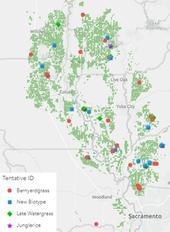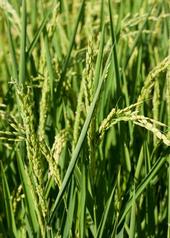- Author: Konrad Mathesius

Summary Review
Results from this year's Italian ryegrass (IR) herbicide trials helped quantify differences in herbicide resistance among IR populations within the southern Sacramento Valley. The trial took place in Bird's Landing, CA (near Rio Vista), and was replicated farther north in Esparto, CA.
- Trials from this year suggest that Osprey-resistant IR populations often associated with the area around Dixon, CA could extend at least as far south as Bird's Landing with only 26% control of IR by Osprey in the trial site.
- The Osprey-resistant population appears to also be moderately resistant to Simplicity, another herbicide in the same chemical...
- Author: Clebson G Goncalves Ph.D.
- Posted by: Gale Perez

In California, Italian ryegrass [Lolium perenne L. spp. multiflorum (Lam.) Husnot] has been around for a long time and is a major weed in orchards, vineyards, field crops, fallow fields, and so on. It grows vigorously in winter and early spring. Italian ryegrass is a short, rhizomatous, that grows from 11 to 35 inches tall, often with erect stems exhibiting purple coloration at the base. That species can be identified by its dark green, glossy, and hairless leaves that are rolled in the bud. Auricles are well-developed and the shape can vary from clasping to blunt, and the ligules are long and membranous. Once flowering occurs, Italian ryegrass is easily distinguishable by alternating spikelets that run along the...
- Author: Bradley Hanson

Sharing a link to an upcoming seminar on a broad screening of annual bluegrass (Poaannua) resistance to herbicides. This is related to aUSDA Specialty Crop Research Initiative grant called "ResistPoa".
From Weed Science Society of America press release:
Annual bluegrass (Poa annua) is a common and troublesome weed in turfgrass and other landscapes. Its invasive biology and acquired herbicide resistance challenges turfgrass managers by increasing costs and compromising expected outcomes. The USDA-SCRI (Specialty Crops Research Initiative) funded ResistPoa project (www.resistpoa.org) seeks to characterize the national distribution of...
- Author: Whitney Brim-DeForest
- Author: Taiyu Guan
- Author: Troy Clark
- Posted by: Gale Perez

From the CAPCA Adviser magazine :: June 2022
Whitney Brim-DeForest is a UCCE Rice and Wild Rice Advisor for Sutter, Yuba, Sacramento, and Placer Counties; Taiyu Guan is an Assistant Specialist in UCCE Sutter-Yuba Counties; Troy Clark is a Rice Junior Specialist for UCCE Butte County.
Introduction
In California rice, herbicide resistance has been documented in Echinochloa spp. since the early 2000's. Recent reports of uncontrolled grasses, as well as possible new species or biotypes have precipitated renewed...
- Author: Kassim Al-Khatib
- Posted by: Gale Perez

From the Rice Notes April 2022 newsletter
Kassim Al-Khatib is the Melvin D. Androus Endowed Professor for Weed...


